Question
Who attacked the aid convoy in Syria on September 19, 2016?
29 Sep, 2016Hypotheses
Calculated Conclusions
Conclusions
1
2
The Russian and Syrian air forces carried out the attack jointly.
3
4
Opposition ground forces carried out the attack.
5
Summary
On September 19, 2016 at around 7 PM local time, a UN aid convoy carrying vital supplies for tens of thousands of Syrian civilians in a besieged area south-west of Aleppo was attacked as it was being unloaded at a Syrian Arab Red Crescent (SARC) warehouse in Urum al-Kubra. 18 civilians were killed, 18 of the 31 trucks were completely destroyed, and neighboring buildings, including the warehouse and a clinic, were damaged in the three-hour attack.
Following the attack, Russia and the United States blamed one another. Russia offered a number of claims, some contradictory. The UN and Human Rights Watch both called for an investigation and raised the possibility that this was a deliberate attack on civilians, and thus a war crime. The attacks highlighted the collapse of a fragile week-long cease-fire that had been supported by Russia and the US.
The Rootclaim analysis finds that the most likely explanation is that the Russian Air Force was behind the attack on the convoy, either as the sole actor, or in conjunction with the Syrian Air Force. It is unlikely that the Syrian Air Force acted alone, and even less likely that the attack was carried out by opposition ground forces. Lastly, the US Air Force is extremely unlikely to have been involved.
As always, this conclusion is based on a mathematical integration of many pieces of evidence and inputs, including:
-
The initial low likelihood of American involvement considering the location of the attack and which military forces were active in the area at the time.
-
Extensive damage and fragmentation seen in images of the scene, videos of large explosions and reports of aircraft sounds overhead, increase the likelihood of an aerial attack, which in turn reduces the likelihood of opposition involvement.
-
Pro-Russian reports on social media initially described this as a successful Russian attack on an opposition weapons convoy. Together with the attack’s timing at night, this raises the likelihood this was a Russian attack involving a mistake in target identification.
-
Images of an unexploded Russian-made bomb further raise the likelihood of Russian or Syrian involvement.
Key Evidence
Contribution
The damage in the photo was caused by a bomb which fell through the roof and exploded.
The damage in the photo was caused by an unexploded bomb falling through the roof.
The damage in the photo was caused by a mortar shot through the roof.
Photos show parts of Russian-made bombs and projectiles at the scene (including the tail fin of an
Neither Russia, nor Syria nor the United States publicly presented any satellite or other evidence indicating who may have been responsible for the attack.
Chairman of the Joint Chiefs of Staff Joseph Dunford testified to the US Congress that Russian planes had flown above the convoy just before the attack and that Syrian planes were also in the area.
Analysis
Evidence
Starting Point (1 item)
Social Media Reports (2 items)
Sky monitors warned of a plane taking off from an air base used exclusively by Russia, followed shortly by a second plane from another location.
Monitoring (2 items)
The Russian Ministry of Defense claimed that a US drone appeared in the area minutes before the attack began.
Forensics (6 items)
The damage caused by the attack was extensive (18 trucks were destroyed, along with neighboring buildings).
There is evidence of significant fragmentation at the scene of the attack.
Photos show parts of Russian-made bombs and projectiles at the scene (including the tail fin of an
Photos show what could be part of a crude, improvised bomb (often referred to as a
The damage in the photo was caused by a bomb which fell through the roof and exploded.
The damage in the photo was caused by an unexploded bomb falling through the roof.
The damage in the photo was caused by a mortar shot through the roof.
Air Presence (3 items)
Chairman of the Joint Chiefs of Staff Joseph Dunford testified to the US Congress that Russian planes had flown above the convoy just before the attack and that Syrian planes were also in the area.
Helicopters and other aircraft were heard just before the attack.
A UN Human Rights Council report on the incident claimed that Syrian Su-24M strike aircraft and at least one Syrian Mi-8 attack helicopter were operating in and around Orum al-Kubra at the time of the attack, but that no coalition or Russian strike aircraft were nearby then.
Claims (2 items)
Neither Russia, nor Syria nor the United States publicly presented any satellite or other evidence indicating who may have been responsible for the attack.
Other evidence (2 items)
A truck with mortar passed by the convoy hours before the attack.
The aid convoy was attacked at night.


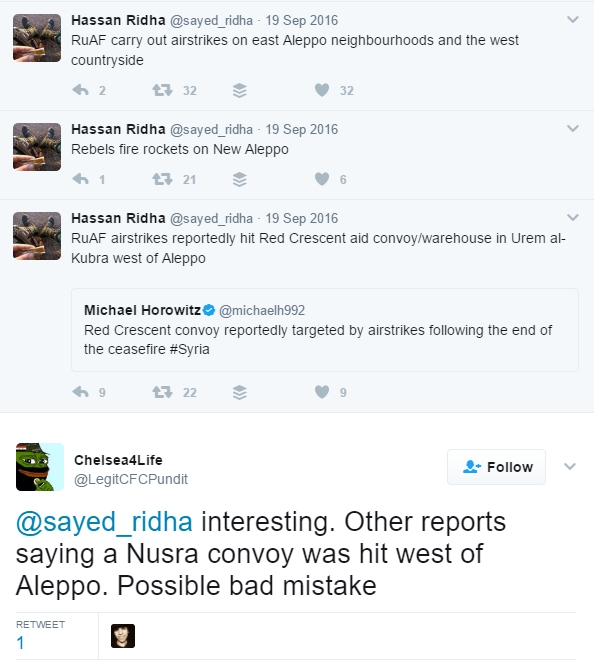


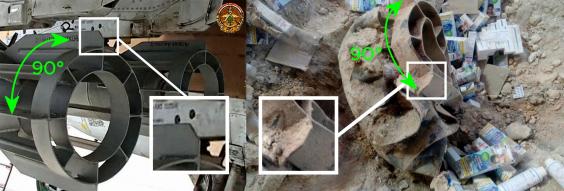

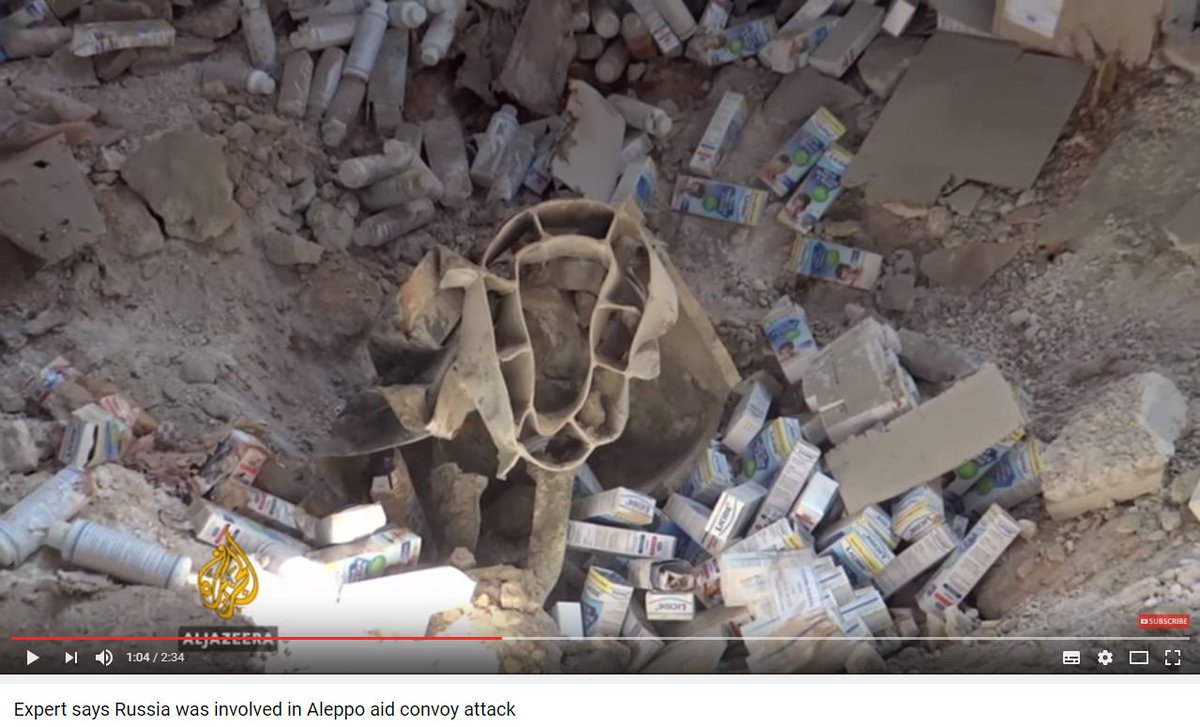

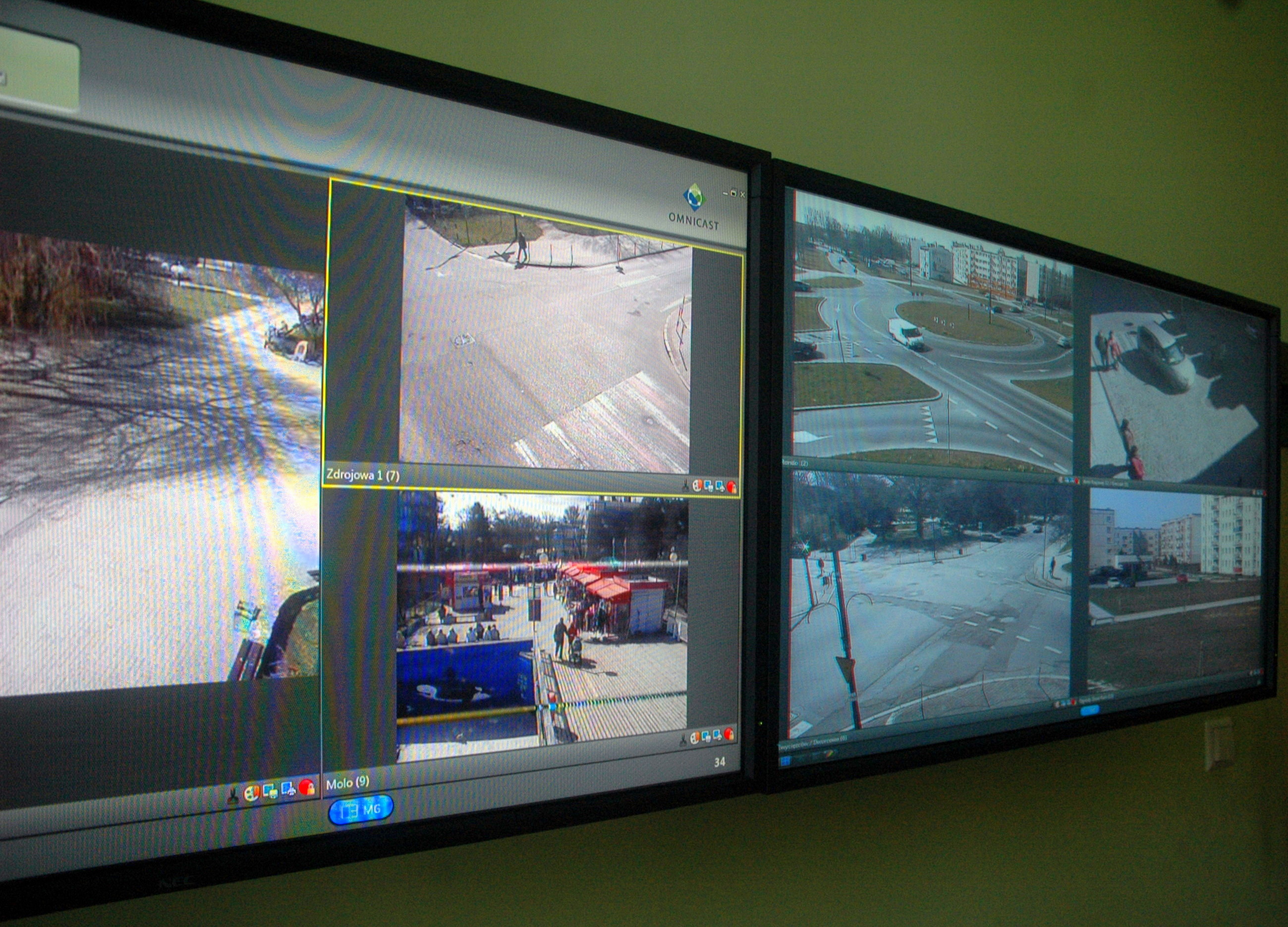




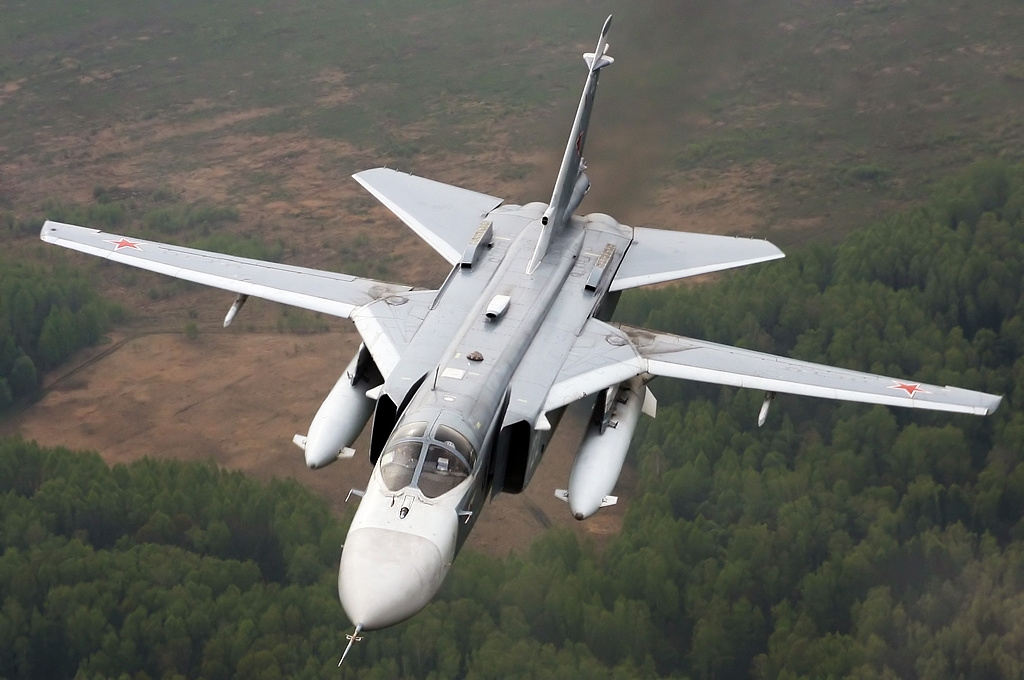

Discussion
Photos show parts of Russian-made bombs and projectiles at the scene (including the tail fin of an OFAB 250-270 http://www.dunarit.com/en/aviationbombs/aviation-bombs-ofab-250-270-high-explosive.html" target="_blank">high-explosive fragmentation bomb).